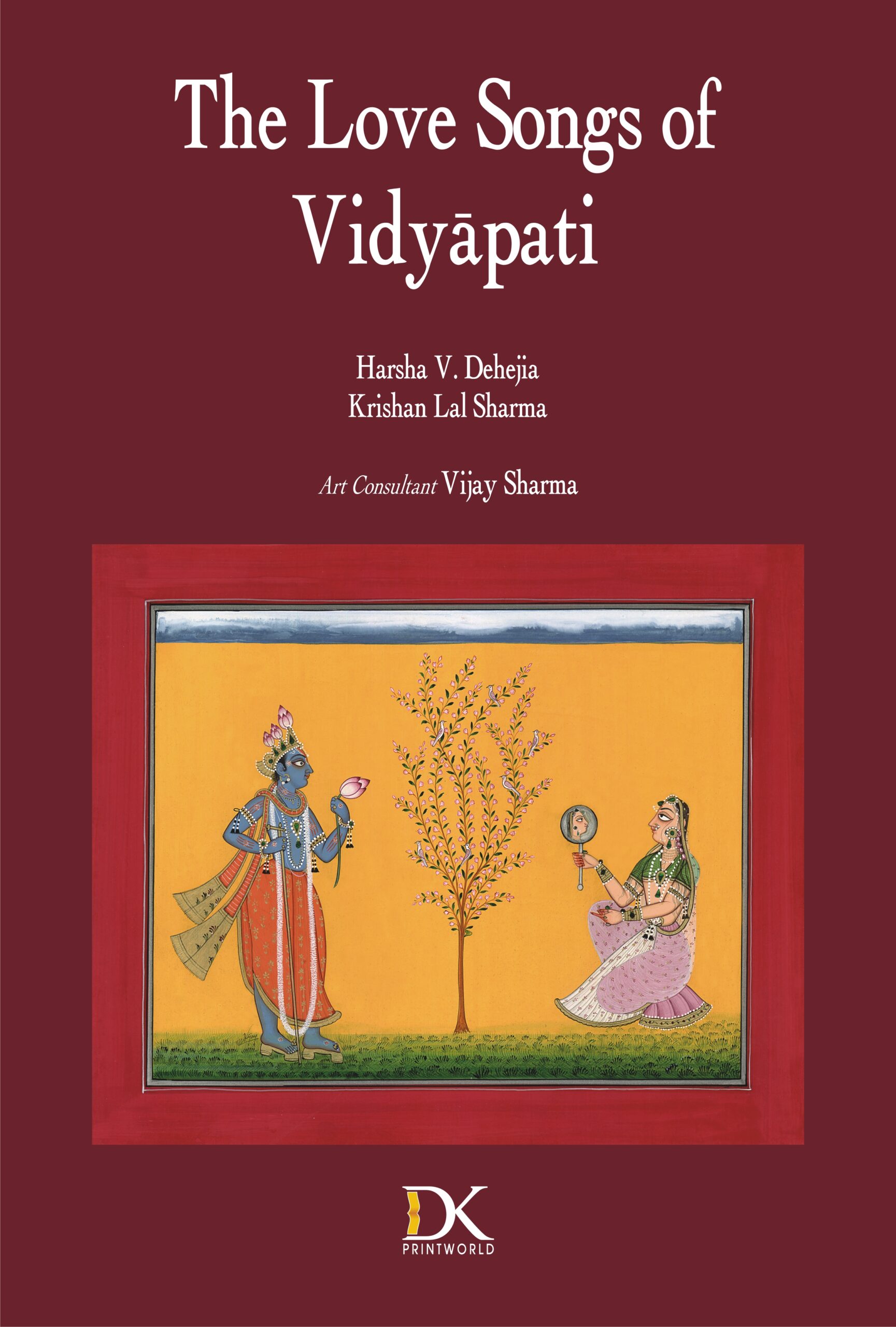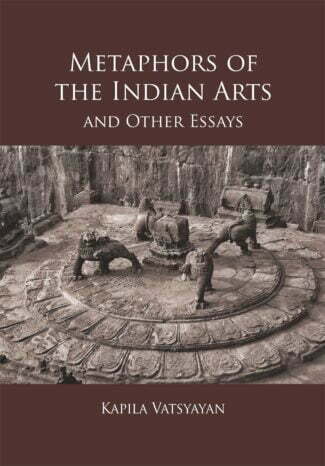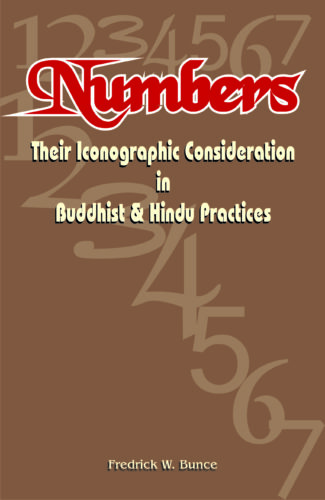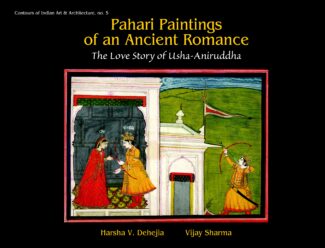Showing 81–90 of 147 results

This portfolio, based on the ten Maithili love songs of Vidyapati, presents lovely paintings on the varied love moods of Radha: her sensuous charm, innocence, longing for Krishna, surrender to love, etc.
Vidyapati (c. 13521448), called second Jayadeva in his lifetime, is immersed, charged and inspired by the love of Radha and Krishna. He wrote emotionally-intensive love songs in Maithili, for the queens of Shiva Simha, his patron, and the common folk. Though drawn inspiration from Jayadeva, more than him, Vidyapati presents in his poetry a rare, tender and sensitive understanding of Radhas psyche. In his love songs Radha, not Krishna, is in the centre stage and through his nayika Vidyapati is reaching out to each and every woman in Mithila.
Vidyapati presents his songs from a womans heart, and describes his nayikas slowly awakening youth, her sensuous beauty, her coyish charm, her naïve innocence, her surrender to love and her anguish on being neglected. She is invariably sensual, spiritual, physical and emotional. Though she did not inspire painters of the time, she ruled the hearts of the people of Mithila. Vidyapatis love songs are written in honeyed words and are sung with mellifluous notes in homes, fields, chowks and havelis, across eastern India. And thus he still rules their heart.
This portfolio, based on the ten love songs of Vidyapati, presents lovely paintings on the varied love moods of Radha, the love queen. In doing so, different artists have displayed their dexterity in Jaipur, Caurapancashika, late Mughal, Manaku, Kishangarh, Jain, Kangra and Basohli styles.

From time immemorial a family Þ consisting of father, mother, son, his wife, and their childern Þ has been accepted as a sacred institution in all societies Þ urban, rural, tribal or uncivilized, or even among animals to a certain extent. In the family, besides love and affection, the main factors cementing the bond between members are some virtues and morals like obedience, faithfulness, honesty, and, above all, chastity, not only for women but also for the men. In Hindu thought Lord Shiva and Goddess Parvati are considered the ideal parents as well as the ideal couple. In four books Þ Pita, Maa, Pati and Patni Þ pleasingly embellished with self-explaining paintings, Mr K.N. Kogata and Mrs Lalita Kogata have extolled the roles, activities, and moods of these important members of the first family with charming and delightful verses.
Sree Maatre Namah Pranaams to mother. With these words starts Latitaa Sahasranaam, or the 1,000 names of Devi. The privilege you can take with your mother, you cannot take even with your father. During the nine months a baby is inside the mother, the mother gives her own food, blood and nourishment to the unborn foetus so that it could develop into a fullgrown baby. During the nine months and during child-birth, the amount of fasts, hardships, worries, discomfort, sleeplessness, and pain a mother undergoes even if you give her the whole world it is no compensation at all. Our epics, Puranas, Upanishads, etc. all extol the highest importance of a mother in society. Mother is equally revered in all cultures throughout the world. In Annapoornaashtakam, Shankaracharya says annapoorne sadhaaporne. . . maataa cha parvati devi, pitaa devo maheshwara. . . . That means, Shankaracharya sees Parvati as the universal mother and lord Shiva as the universal father. In a similar way, the Kogatas have seen Parvati and Shiva, and have beautified this book with pleasing illustrations of both of them in different activities and moods, followed by charming and delightful verses.

In recent years mandalas have attracted much interest and the main focus of such interest has been directed towards Tibetan mandalas. But mandalas are found across a wide spectrum of South Asian religious traditions as well including those of the Hindus and Jains. Hindu mandalas and yantras have hardly been researched. This book attempts to fill this gap.
Mandalas and Yantras are used in rites of worship in a wide range of Hindu, Buddhist and Jaina religious traditions. This volume has scholarly articles that deal with the little-researched subject of mandalas and yantras in specific Hindu traditions-Smarta, Pancaratra, Shaiva and Shakta traditions. The articles discuss mandala-like arrangements and the navagrahamandala in the ritual practices of Smarta Brahmins in Maharashtra. Use of mantras and yantras in the Vaishnava Pancaratra tradition is studied on the basis of passages from the Samhitas. They concentrate on the Siddhanta school, pre-11th century Shaiva Mandalas expressing the link between branches of Shaivism and between Shaiva and non-Shaiva groups, and description of use of mandalas in Abhinavaguptas Tantraloka. The shricakra is explored as a cosmic than a ritual diagram which has immense religious/spiritual significance. A slightly different attempt examines application of vastumandala, as described in Varahamihiras Brihatsamhita, in temple architecture. Parallels are drawn between the rituals taken up here and others like Buddhist tantric initiation rites. The writings consult many religious texts including the Sharadatilaka, the 11th-century Yoginihridaya and the Svacchandatantra to understand mandala structure and rituals. A highlight of the volume is the inclusion of numerous reproductions of mandala designs and other drawings and extensive notes. The volume will be useful for Indologists studying Hindu religious traditions, particularly mystical rituals and rites of Vaishnava, Shaiva and Shakta traditions.

This anthology is a selection of writings of Dr Kapila Vatsyayans nearly four-decade long journey as an art critic and art historian. It reveals the distinct nature of Indian arts from the angle of the world-view in which they emerge. At the same time, it amply shows the theory of art and aesthetics which may enable us to to see the other traditions of art from our own window.
This anthology Metaphors of the Indian Arts and Other Essays is a selection of writings of Dr Kapila Vatsyayans nearly four-decade long journey as an art critic and art historian. It reveals the distinct nature of Indian arts from the angle of the world-view in which they emerge. At the same time, it amply shows the theory of art and aesthetics which may enable us to to see the other traditions of art from our own window. In a seminal article entitled Metaphors of the Indian Arts, the author identifies some fundamentals which permeate the Indian artistic traditions.
In the article entitled Mountain, Myth, Monuments Dr Vatsyayan discusses the significance of mountains and the sanctuaries, diversity of attitude and approaches to them in Indian context. She focuses on sacred mountains, especially Kailasa, which have dominated the Indian imagination for many millennia in the world of literature, architecture, sculpture, music and dance.
The attitude to the human body as also the self-consciousness of the relationship of the senses and the mind in diverse civilizations has been of special interest to the author for decades. In the article Early Evidence of Female Figures, Music and Dance, she points at essentials of treating the human body in Indian art, specially the female body, over a long span of history. She draws attention to the large measure of consensus on the identification of meaning of the particular or single image or relief, ranging from the examples from Mesopotamia to Assyria to Egypt and the figurines and statues of the Indus Valley, Mohenjo-Daro, Harappa and Mehergarh.
Further she returns to explicitly stating the ideational background of Indian aesthetics. Finally, she identifies certain motifs which have travelled across a vast geographical area, specially in South-East Asia.
Altogether, these essays will enable the reader to trace not only her journey but also her place in Indian art history as a carrier of a tradition of A.K. Coomaraswamy and Stella Kramrisch.

This volume presents the detailed diagrams of plans of over 380 of temples, tombs, palaces and pavilions found in the Indian subcontinent and the Indianised states of Java, the Khmer, Pagan, Thailand, Vietnam and Malaysia. The book also containing brief notes of each plan will be useful for scholars and students of Buddhist, Hindu and Islamic architecture with particular reference to South Asian and South-East Asian regions.
This volume presents the plans of temples, tombs, palaces and pavilions found in the Indian subcontinent and the Indianised states of Java, the Khmer, Pagan, Thailand, Vietnam and Malaysia. They contain detailed diagrams of plans of over 380 structures along with a brief note on each plan that covers the various segments/sections of each monument. The plans are precise and are presented along with their elevations which are proportional, i.e., depict major architectural forms and masses. The monuments covered, of the period third century bc to ce 1854, pertain to different regions of India and different periods and dynasties in Indian history. They include famous structures like the cave monasteries at Ajanta, Sanchi temples, Rajasthani temples, the Lal Qila and the Taj Mahal as well as other lesser-known buildings. Monuments of the Mughals, the Sultanate kings, the Lodis, Tughlaqs and Vijayanagar kings are among the Indian structures included. The book will be useful for scholars of Buddhist, Hindu and Islamic architecture with particular reference to South Asian and South-East Asian regions.

The Indian subcontinent is home to some spectacular mosques which are architectural marvels produced by the spread of Islam in India. 54 important mosques including their locations, history, structure and plan patterns, are covered in this volume which will be indispensable for scholars and students of Indo-Islamic architecture.
The spread of Islam in India produced some of the most spectacular monuments, the mosques stand as testimony to the great architectural skill and expertise of the Indian subcontinent through centuries and constitute one of the most important aspects of the rich architectural culture of the region. This volume showcases some 54 important mosques spread across the Indian subcontinent from Lahore in modern Pakistan to Gaur in modern West Bengal and from Delhi in the north to Kayalpatnam and Bijapur in South India. It mentions the location of the mosques, their history, structure and plan patterns and discusses various elements of the structures in detail: their entrances, pillars, porticoes, type of mihrab and other aspects. It emphasises the importance of a particular masjid such as its typifying the mosques of a certain period or dynasty and setting the standard for later masjids in some manner. It presents some other plans and proportional elevations in the appendices for a comparative study. An extremely useful list of Muslim rulers of the Indian subcontinent is provided. With maps and drawings of plans of mosques, the book is a painstaking effort to examine the evolution and iconography of the mosque architecture in the region. The volume will be indispensable for scholars and students of Indo-Islamic architecture.

This book is a dictionary of mudras in Hindu and Buddhist religious practices that lists various mudras and contains detailed and revealing notes about them. It scrutinizes the work done by a number of scholars to throw further light on the subject.
Mudras occupy an important place in Buddhist and Hindu religious practices as these signify special meanings, associated with specific divinities and rites, which cannot be represented any other way. This book is a dictionary of mudras in Hindu and Buddhist religious practices that lists the various mudras deity-centred, rite-centred, yogic-centred, and so on illustrating each with a simple drawing drawn generally from the perspective of one holding the mudra. It contains detailed notes that give numerous references to literary and other sources that reveal a lot about the mudras their descriptions in the texts, rites associated with the mudras in the texts as well as the varied interpretations of a number of mudras in the different texts. The book also has an introduction on Hindu and Buddhist mudras that goes into iconographic features associated with deities along with the technical descriptions and the subcategories and further divisions into which mudras are arranged. It scrutinises the work done by a number of scholars on the subject to throw further light on the subject. The volume will prove indispensable to all students and scholars who are engaged in study of Hindu and Buddhist religious traditions and practices.

The book studies INLAY art that developed in Mughal Architecture indigenously, from Humayun to Shah Jehan (c. 1535 to 1658 ad). Mughal inlay is architectural and to brand it pietra-dura, which was a florentine picture-art used on wooden furniture, is a misnomer. This book also reveals that Orpheus Plaques which led the colonial historians to Florence to trace the origin of Mughal inlay were imported ready-made and there is no other example of Florentine pietra-dura.
The book studies INLAY art as it developed in Mughal Architecture indigenously, from Humayun to Shah Jehan (c. 1535 to 1658 ad), landmark examples of which have been illustrated. Mughal inlay is architectural, and it is a misnomer to brand it: pietra-dura which was a florentine picture-art used on wooden furniture. Orpheus Plaques which led the colonial historians to trace origin of Mughal inlay to Florence, were imported ready-made and there is no other example of Florentine pietra-dura. Inlay is the most distinctive characteristic of Mughal Architecture and study of its growth and development, to the elegance of the Taj dados, the chef doeu-vre of Indian art, is historically as enlightening, as interesting it is artistically.

The book highlights the true iconographic import of numbers/ numerology in Hindu and Buddhist practices bringing out, in detail, the unique properties of each iconographically significant number: ranged between one (1) and one thousand and twenty four (1024).
In his effort to find an explanation for the unknown, the mysterious around him, the ancient man saw in numbers, among other things, a high significance. And frequently used them to explain the ineffable or even predict through numerology. Astrology became a parallel, interwoven science which, like numerology, was used to predict the future and also to determine propitious times for venturing upon an important activity: be it the naming of a child, marriage, or construction of a building. Numbers, in fact, have always held a strong fascination for all various cultures of Asia. Considered to inhere both mystic and iconic significance in the Hindu and Buddhist worlds, their importance was emphasized in celebrated architectural treatises, like the Manasara and the Mayamata and they, (together with other complex procedures), were invariably utilized by the priest-architect (the sthapati) in the planning, design and construction of temples and other buildings. Not only the numbers, but even the geometric forms (like the circle, square or rectangle) came to have numerological and, consequently, iconographic importance in these cultures. Yet another fascinating work from an internationally known scholar of Oriental Art, the book highlights the true iconograpic import of numbers/numerology in Hindu and Buddhist practices bringing out, in detail, the unique properties of each iconographically significant number: ranged between one (1) and one thousand twentyfour (1024). Professor Bunce here perceives numerology not as the arcane or occult science, but as an academic proposition concerned with the ethos of numbers and the genesis of their importance within the Hindu and Buddhist art, particularly architecture. A useful read for the scholars of iconography.

The book exhibits paintings which depict an ancient love story of India involving Krishnas grandson Aniruddha and Banasuras daughter Usha. Depiction of Garudas narration of the story to Krishna, Balarama and Pradyumna during their battle with Banasura, and the Pahari kalam of painter Ranjha create lyrical romantic scenes and gory battles with equal ease.
Among ancient love stories of India, that of Usha-Aniruddha has a pride of place. Being a part of various Puranas such as the Harivamsha, Bhagavata and Vishnu Puranas it acquires a sacrality and legitimacy. We are privy to the interaction of all the three gods, namely Vishnu, Shiva and Brahma. The highlight of the story is the romantic involvement of Krishsas grandson Aniruddha and Banasuras daughter Usha. Between scenes of a pitched battle between Banasura and Krishna, where a mighty demon and his army battle with Krishna, Balarama and Pradyumna and interspersed with long conversations with Garuda, the narrative takes us to tender scenes of romance as well as a birds-eye view of Shonitpur and Dvaraka. The Puranic narrative is brought alive by the graceful Pahari kalam of Ranjha, son of Nainsukh, who renders the story with finesse and precision and creates lyrical romantic scenes and gory battles with equal ease. The book brings together for the first time the entire series from the Bhuri Singh Museum of Chamba in Himachal Pradesh but also features folios from other museums and private collections as well as a critical look at the painter and the patron of this series. The book is a visual treat.
| There are no products |